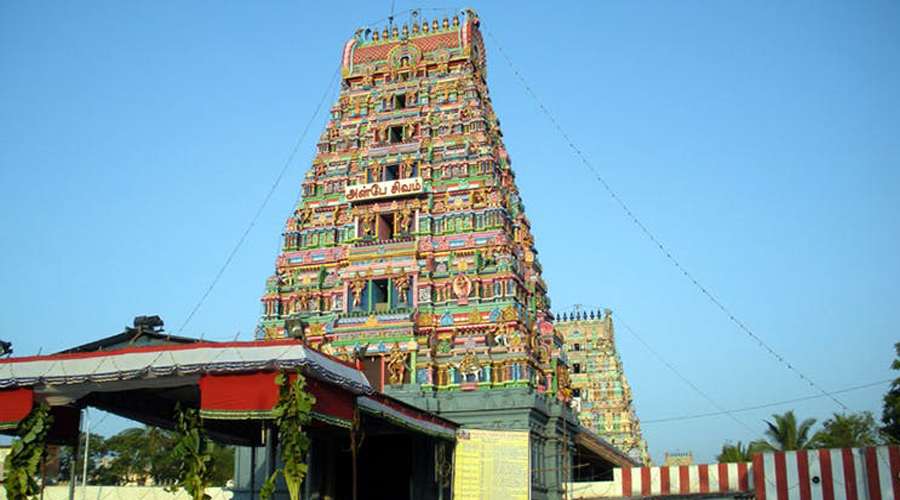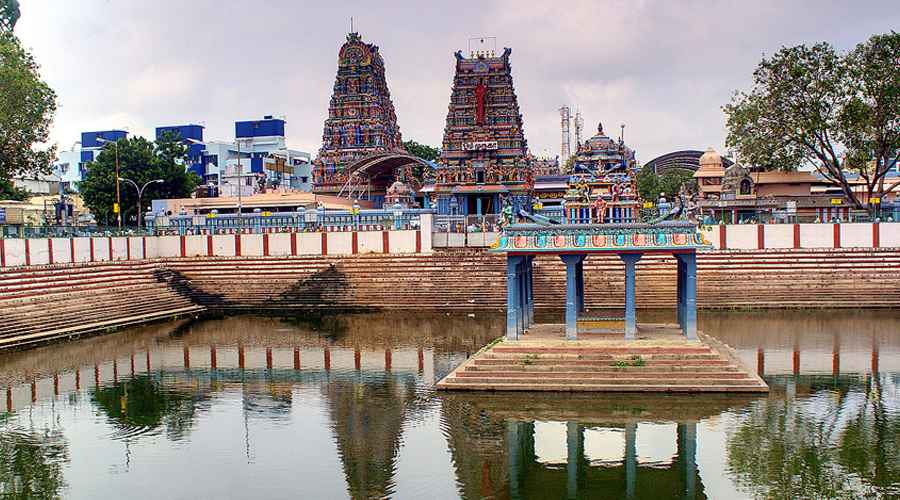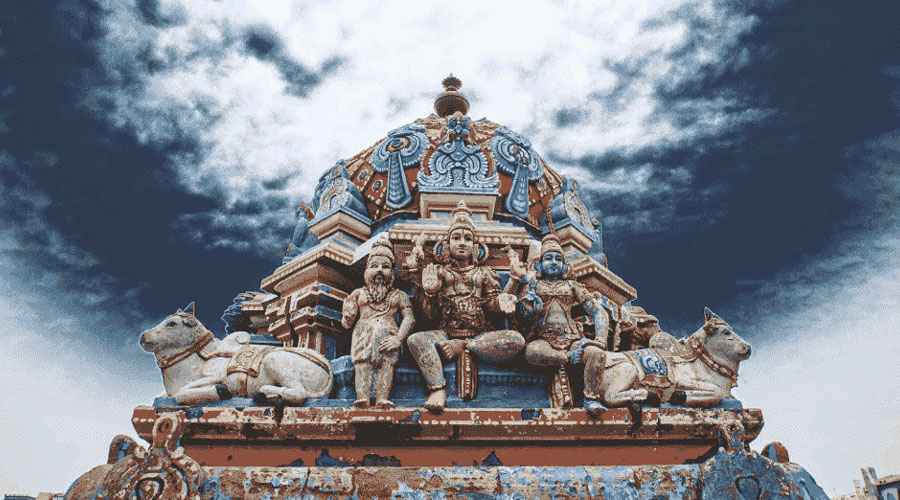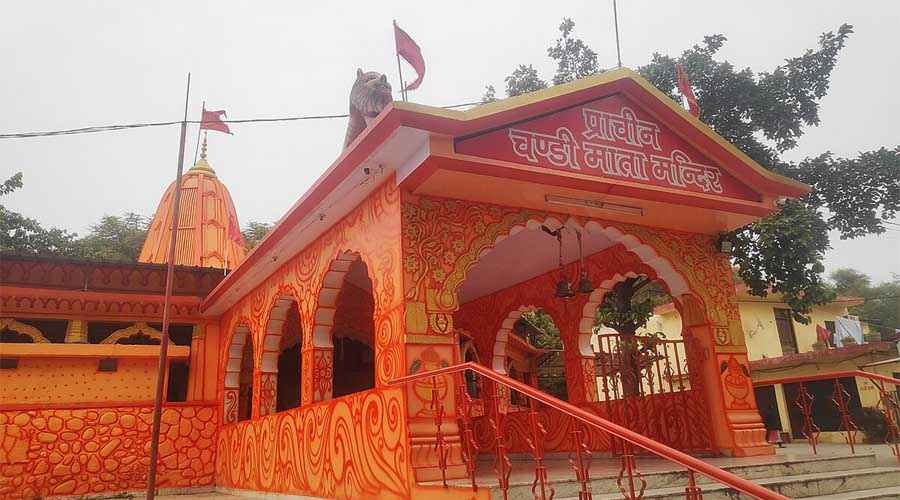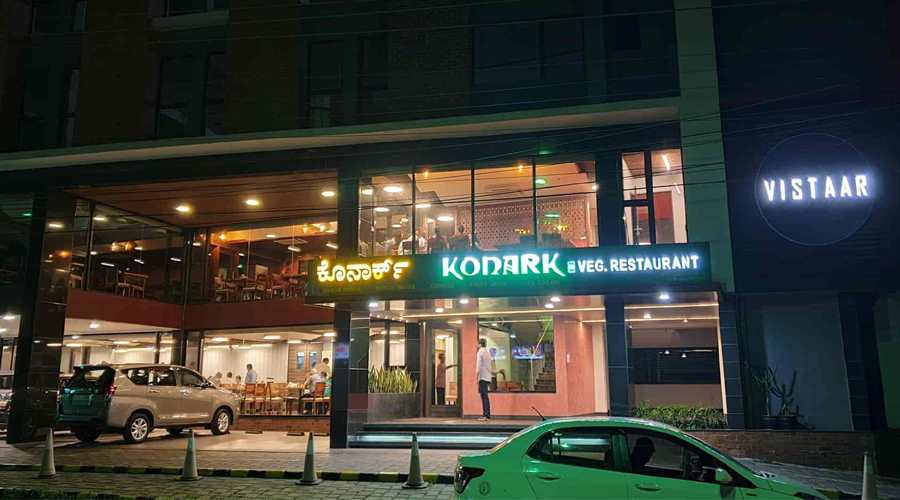The Chola dynasty, which flourished between the 9th and 13th centuries CE, left behind a legacy of art, governance, literature, and most remarkably, monumental temples. Known as one of the longest-ruling dynasties in South India, the Cholas blended devotion, artistry, and political vision into their temple architecture. These temples remain some of the finest examples of Dravidian architecture, encompassing lofty towers, massive gateways, detailed sculptures, and spiritual symbolism. Beyond being centers of worship, Chola temples were cultural hubs where art, music, dance, and community life thrived.
The Vision of the Cholas
Temple-building under the Cholas was not merely a religious pursuit. It reflected their authority, wealth, and desire to integrate kingdoms through devotion. Temples symbolized the king’s role as the earthly representative of divinity. By building grand structures, the rulers not only expressed their faith but also embedded their rule in the social and spiritual life of their people.
The Cholas adopted and elevated the established Dravidian style, characterized by towering gopurams (gateway towers), vimanas (sanctum towers), vast courtyards, pillared halls, and intricate sculptures. Stone became the principal medium, giving permanence to their creations and standing in contrast to the earlier rock-cut and brick-built shrines.
Architectural Brilliance
One of the defining features of Chola temples is their grandeur, which inspires awe even today. The temples are distinguished by carefully proportioned vimanas, rich iconography, and monumental scale. Technique and artistry met engineering in an unprecedented way.
- Use of Stone: The shift from brick to granite enabled massive construction that could endure centuries.
- Vimanas: Unlike later temple towers dominated by ornate gopurams, Chola temples emphasized the soaring sanctum tower (vimana) over the deity’s shrine.
- Sculpture and Iconography: Walls, niches, and pillars bear depictions of deities, mythological narratives, dancers, and celestial beings, blending spiritual symbolism with artistic elegance.
- Bronze Icons: Apart from stone, the Cholas perfected bronze casting. Exquisite Nataraja icons from this era are globally renowned masterpieces.
The Great Living Chola Temples
Three of the most iconic temples constructed by the Cholas are grouped under the UNESCO World Heritage Site called the Great Living Chola Temples.
1. Brihadeeswarar Temple, Thanjavur (Rajarajeswaram)
Commissioned by Raja Raja Chola I in 1010 CE, the Brihadeeswarar Temple is the most celebrated monument of Chola achievement. Dedicated to Lord Shiva, the temple astonishes with its massive scale.
- Its vimana rises to about 66 meters, capped by a single granite block that weighs nearly 80 tons. The engineering behind lifting such a stone without modern machinery is still a wonder.
- The temple walls are adorned with murals and frescoes that capture both religious themes and glimpses of contemporary life.
- The seated Nandi (bull) sculpture near the entrance is carved from a single stone and is among the largest in India.
This temple reflects not just devotion but also the Chola state’s political might and organizational capability.
2. Gangaikonda Cholapuram Temple
Constructed by Rajendra Chola I, the son of Raja Raja Chola, this temple was built to commemorate his victorious northern expedition, where he brought the waters of the Ganges back to his capital, Gangaikonda Cholapuram.
While similar in conception to Brihadeeswarar, the temple differs in aesthetic sensibility. The vimana here is slightly shorter but more gracefully curved, reflecting a refinement of architectural style. Sculptures on the outer walls show great skill, depicting mythological episodes with extraordinary detail. The temple also highlights the Cholas’ vision of linking spiritual grandeur with political power.
3. Airavatesvara Temple, Darasuram
Built by Rajaraja Chola II in the 12th century, this temple is smaller than the previous two but equally significant. Known for its intricate artwork, the Airavatesvara Temple resembles a chariot, with elaborate wheels carved into the base.
It is celebrated for the finesse of its sculptures, which depict not only gods and goddesses but also dancers, musicians, and daily life scenes. A special feature is the musical steps, which produce varied sounds when struck—an early example of blending science with spirituality.
Cultural and Social Role
Chola temples were more than places of worship—they were the epicenters of society.
- Patronage of Arts: Temples became schools for dance (Bharatanatyam), music, and theater, where performers dedicated their craft to the deities. The Natya Shastra tradition was integrated into temple rituals.
- Centers of Administration: Granaries, treasuries, and records were maintained within temple complexes. Temples acted as banks, lending resources for community welfare.
- Socio-Economic Role: Farmers, artisans, and merchants all contributed to and benefited from the temple economy. Festivals brought communities together in celebration.
In this way, temple spaces represented a harmonious blending of the sacred with the practical aspects of governance and commerce.
The Legacy
Even after the decline of the Chola dynasty, their temples continued to inspire successive South Indian kingdoms, including the Pandyas, Vijayanagar rulers, and Nayaks. The architectural balance achieved by the Cholas remains unmatched. Today, thousands of devotees and tourists visit these monuments, experiencing the grandeur envisioned a millennium ago.
Preserved under UNESCO’s protection, the Chola temples are not relics of the past; they are living heritage sites where rituals, festivals, and cultural practices thrive. Their art continues to influence contemporary dance, music, and sculpture in Tamil culture.
Conclusion
The temples of the Chola dynasty stand as majestic reminders of a civilization that valued beauty, devotion, and community. They embody the spirit of Tamil culture and remain milestones in India’s architectural journey. With their soaring towers, exquisite sculptures, and cultural vibrancy, Chola temples are not just monuments—they are living chronicles of history, celebrating the union of human creativity and divine aspiration.
Even after a thousand years, the stones of Brihadeeswarar, the elegance of Gangaikonda Cholapuram, and the intricate carvings of Airavatesvara whisper the stories of emperors, devotees, and artists who turned faith into timeless art.
